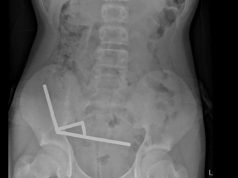Odds of four or more acute care visits per year up for children in lowest opportunity neighborhoods
FRIDAY, April 6, 2018 (HealthDay News) — The Child Opportunity Index measure of neighborhood context is associated with pediatric acute care visit frequency and diagnoses, according to a study published online April 6 in Pediatrics.
Ellen E. Kersten, Ph.D., from the University of California in San Francisco, and colleagues conducted a cross-sectional study involving 47,175 San Francisco resident aged <18 years with an emergency department and/or urgent care visit between 2007 and 2011. The spatial distribution of neighborhood child opportunity and income was compared using hot-spot analysis.
The researchers identified distinct spatial distributions for neighborhood child opportunity and income; different clusters of high- and low-risk neighborhoods were identified. The odds of four or more acute care visits per year were increased for children living in the lowest versus the highest opportunity neighborhoods (odds ratio, 1.33). There was a negative correlation for neighborhood child opportunity with visits for respiratory conditions, asthma, assault, and ambulatory care-sensitive conditions, and a positive correlation with injury-related visits.
“The Child Opportunity Index could be an effective tool for identifying neighborhood factors beyond income related to child health,” the authors write.
Copyright © 2018 HealthDay. All rights reserved.








